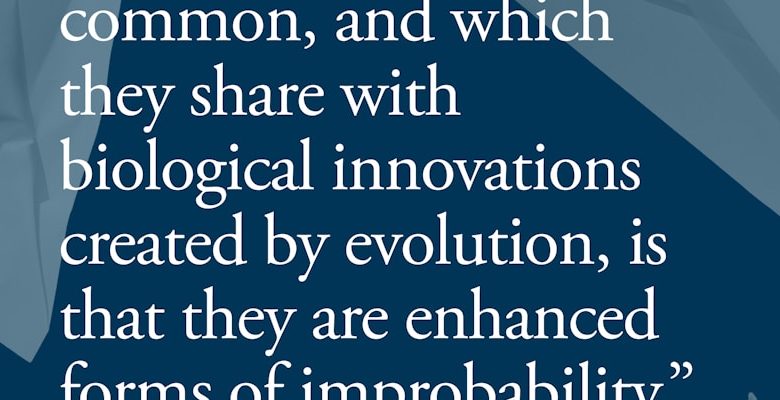Imagining Tomorrow: Innovations That Will Shape Our Future

- The Future of Transportation: From Flying Cars to Hyperloop
- Revolutionizing Healthcare: The Impact of Artificial Intelligence and Robotics
- Sustainable Living: How Green Technology Will Change Our Way of Life
- Education 2.0: The Role of Virtual Reality and Personalized Learning
- Smart Cities: The Integration of IoT and Big Data for Urban Development
- Space Exploration: What Lies Beyond Earth’s Orbit
The Future of Transportation: From Flying Cars to Hyperloop
In the near future, the way we move from one place to another is set to undergo significant transformations. Innovative technologies such as flying cars and Hyperloop are on the horizon, promising to revolutionize the way we think about transportation.
Flying cars, also known as air taxis, are being developed by companies around the world. These vehicles will be able to take off and land vertically, offering a faster and more efficient way to travel short distances. With advances in autonomous technology, flying cars are expected to become a reality sooner than we think.
On the other hand, the Hyperloop is a high-speed transportation system that uses magnetic levitation to propel passenger pods through a vacuum tube. This revolutionary mode of transportation has the potential to reach speeds of up to 700 mph, significantly reducing travel times between cities. Companies like SpaceX and Virgin Hyperloop are already working on bringing this technology to life.
As we look towards the future of transportation, it’s clear that flying cars and Hyperloop are just the beginning. These innovations have the potential to reshape our cities, reduce traffic congestion, and make travel more sustainable. The possibilities are endless, and the future of transportation is sure to be an exciting one.
Revolutionizing Healthcare: The Impact of Artificial Intelligence and Robotics
Artificial intelligence and robotics are revolutionizing the healthcare industry, bringing about significant changes in the way medical services are delivered. These innovations are having a profound impact on patient care, diagnosis, treatment, and overall healthcare outcomes.
AI and robotics are transforming the healthcare landscape by automating routine tasks, streamlining processes, and improving efficiency. They are enabling healthcare providers to deliver more personalized and precise care to patients, leading to better treatment outcomes and higher patient satisfaction.
By leveraging AI and robotics, healthcare professionals can analyze vast amounts of data quickly and accurately, leading to faster and more accurate diagnoses. This not only saves time but also helps in identifying potential health issues at an early stage, improving patient prognosis and overall quality of care.
Furthermore, AI-powered technologies are enhancing remote patient monitoring and telemedicine, making healthcare more accessible and convenient for patients. This is particularly beneficial for individuals living in remote areas or those with limited mobility, as it allows them to receive timely medical attention without the need to travel long distances.
Sustainable Living: How Green Technology Will Change Our Way of Life
Green technology is revolutionizing the way we live, offering sustainable solutions to environmental challenges. From renewable energy sources to energy-efficient buildings, these innovations are reshaping our future. By embracing green technology, we can reduce our carbon footprint and create a more environmentally friendly society.
One of the key aspects of sustainable living is the use of renewable energy sources such as solar and wind power. These clean energy sources are abundant and can help reduce our dependence on fossil fuels. By harnessing the power of the sun and wind, we can generate electricity without harming the environment.
Another important aspect of green technology is the development of energy-efficient buildings. By incorporating features such as insulation, energy-efficient appliances, and smart thermostats, buildings can reduce their energy consumption and carbon emissions. This not only benefits the environment but also saves money on energy bills.
In addition to renewable energy sources and energy-efficient buildings, green technology is also revolutionizing transportation. Electric vehicles are becoming increasingly popular as a clean and sustainable alternative to traditional gas-powered cars. With advances in battery technology, electric vehicles are becoming more affordable and practical for everyday use.
Overall, green technology is changing the way we live by offering sustainable solutions to environmental challenges. By embracing these innovations, we can create a more environmentally friendly society and reduce our impact on the planet. Sustainable living is not just a trend – it is the future of our way of life.
Education 2.0: The Role of Virtual Reality and Personalized Learning
Education 2.0 is a term used to describe the next generation of learning that incorporates virtual reality (VR) and personalized learning to enhance the educational experience. Virtual reality technology allows students to immerse themselves in realistic simulations that make learning more engaging and interactive.
With VR, students can explore historical sites, travel to outer space, or dissect a virtual frog without the limitations of the physical world. This hands-on approach to learning helps students retain information better and improves their critical thinking skills.
Personalized learning, on the other hand, tailors the educational experience to meet the individual needs and interests of each student. By using data analytics and artificial intelligence, educators can create customized learning paths for students based on their strengths, weaknesses, and learning styles.
This shift towards personalized learning allows students to learn at their own pace, filling knowledge gaps and challenging them at the appropriate level. It also promotes student autonomy and ownership of their learning, leading to better outcomes and higher student engagement.
By combining virtual reality with personalized learning, Education 2.0 has the potential to revolutionize the way we educate future generations. This innovative approach to learning not only prepares students for the challenges of tomorrow but also fosters a lifelong love of learning and curiosity.
Smart Cities: The Integration of IoT and Big Data for Urban Development
Smart cities are revolutionizing urban development by harnessing the power of IoT and big data integration. This innovative approach involves utilizing interconnected devices and sensors to collect and analyze vast amounts of data in real-time, enabling city planners to make informed decisions for sustainable growth and improved quality of life for residents.
By leveraging IoT devices such as smart meters, traffic sensors, and environmental monitors, cities can gather valuable insights on various aspects of urban life, from energy consumption and transportation patterns to air quality and waste management. This data is then processed and analyzed using big data technologies, allowing for predictive modeling, trend analysis, and optimization of city services.
The integration of IoT and big data in smart cities enables proactive decision-making, resource optimization, and efficient service delivery. For example, predictive maintenance of infrastructure can help prevent costly breakdowns, while real-time traffic monitoring can reduce congestion and improve public transportation efficiency. Additionally, data-driven insights can inform urban planning strategies, leading to more sustainable and resilient cities.
Overall, the integration of IoT and big data in smart cities holds great promise for shaping the future of urban development. By harnessing the power of technology and data analytics, cities can become more efficient, sustainable, and livable for their residents. As we continue to advance in this digital age, the possibilities for smart cities are endless, paving the way for a brighter and more connected future.
Space Exploration: What Lies Beyond Earth’s Orbit
Space exploration opens up a world of possibilities beyond Earth’s orbit. As we look towards the future, advancements in technology are paving the way for new innovations that will shape our understanding of the universe. From manned missions to Mars to the discovery of exoplanets in distant solar systems, the exploration of space holds the key to unlocking the mysteries of the cosmos.
One of the most exciting developments in space exploration is the prospect of establishing a human presence on Mars. Scientists and engineers are working tirelessly to overcome the challenges of long-duration space travel and the harsh conditions of the Martian environment. By sending astronauts to the Red Planet, we can gain valuable insights into the potential for sustaining life beyond Earth and expanding our horizons as a species.
Another area of focus in space exploration is the search for habitable exoplanets. With the discovery of thousands of planets outside our solar system, astronomers are studying these celestial bodies to determine their potential for hosting life. By using advanced telescopes and spacecraft, scientists hope to find Earth-like planets that could support alien life forms and further our understanding of the universe.



